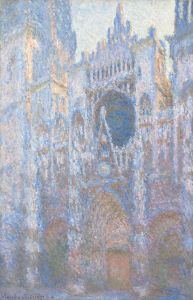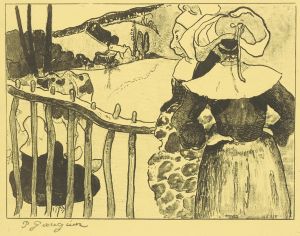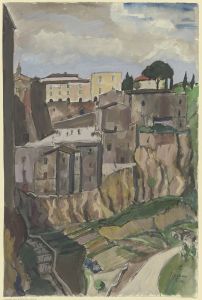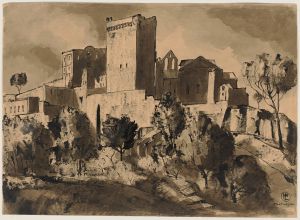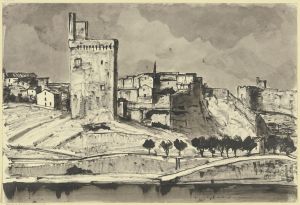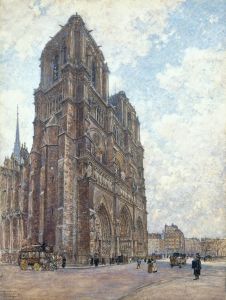
Blick von der Kathedrale in Tours
A hand-painted replica of Hermann Lismann’s masterpiece Blick von der Kathedrale in Tours, meticulously crafted by professional artists to capture the true essence of the original. Each piece is created with museum-quality canvas and rare mineral pigments, carefully painted by experienced artists with delicate brushstrokes and rich, layered colors to perfectly recreate the texture of the original artwork. Unlike machine-printed reproductions, this hand-painted version brings the painting to life, infused with the artist’s emotions and skill in every stroke. Whether for personal collection or home decoration, it instantly elevates the artistic atmosphere of any space.
Hermann Lismann was a German painter known for his contributions to the early 20th-century art movements, particularly Expressionism. Born in 1878 in Frankfurt am Main, Lismann studied art in Munich and Paris, where he was influenced by the burgeoning modernist movements of the time. His works often reflect a blend of traditional techniques with modernist sensibilities, capturing the essence of the environments he depicted.
"Blick von der Kathedrale in Tours" is one of Lismann's notable works, showcasing his ability to capture architectural beauty and the interplay of light and shadow. The painting depicts a view from the cathedral in Tours, a city in central France known for its rich history and architectural heritage. Tours is home to the magnificent Saint-Gatien Cathedral, a Gothic masterpiece that has inspired many artists over the years. While specific details about the painting's creation are scarce, it is evident that Lismann was captivated by the cathedral's grandeur and the surrounding landscape.
Lismann's style in "Blick von der Kathedrale in Tours" likely reflects his expressionist tendencies, characterized by bold colors and dynamic compositions. Expressionism, as an art movement, sought to convey emotional experiences rather than physical reality, and Lismann's work often embodies this ethos. His use of color and form would have been intended to evoke the atmosphere of the scene, perhaps capturing the mood of Tours as seen from the vantage point of the cathedral.
Throughout his career, Lismann was part of the broader European avant-garde movement, which sought to break away from traditional artistic conventions. His work was influenced by his time in Paris, where he was exposed to the works of other modernists and the vibrant artistic community. This exposure likely informed his approach to capturing scenes like the one in Tours, blending realism with expressive elements to create a unique visual narrative.
Unfortunately, Lismann's career was disrupted by the rise of the Nazi regime in Germany. As a Jewish artist, he faced persecution and was forced to flee the country. He eventually settled in France, where he continued to work despite the challenges posed by the war and his displacement. The impact of these experiences is evident in the emotional depth and complexity of his later works.
"Blick von der Kathedrale in Tours" stands as a testament to Lismann's skill and his ability to capture the essence of a place through his art. While specific details about the painting's provenance or current location are not readily available, it remains an important part of his oeuvre, reflecting both his artistic vision and the historical context in which he worked. Hermann Lismann's legacy continues to be appreciated by art historians and enthusiasts who recognize his contributions to the development of modern art in Europe.






